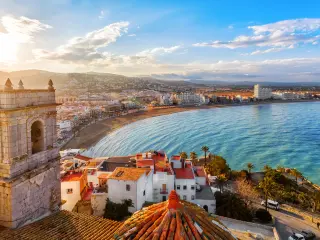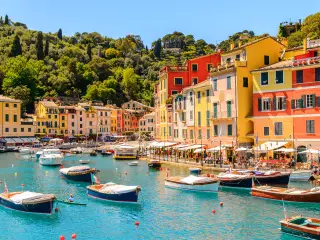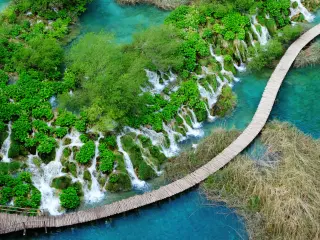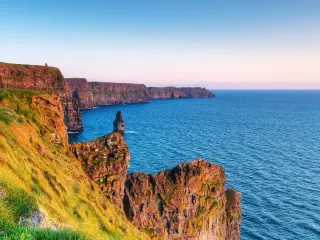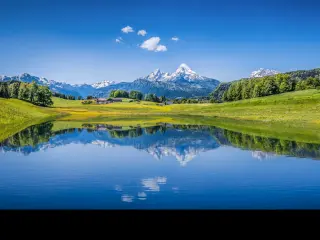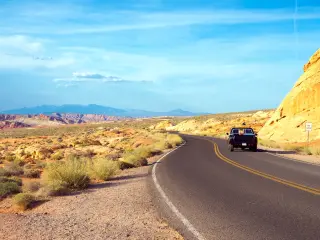The 5 Highest Roads In The World and The 10 Pretenders That Are Not
There is a lot of dispute, misinformation, and general confusion on the subject matter of the highest road in the world, so I thought I'd get this question a proper answer once and for all.
The highest road in the world goes up the Uturuncu volcano to a height of 5,730 m (18,799 ft). Lagiong La in Tibet and Kungzhag La in India are both higher up, but the climbs to the top are so extreme that they really do not count as roads.
Read on to get the complete rundown of the 5 highest roads in the world and some clarity around why there are so many wrong answers to this question. I have added a list of 10 other roads that have laid claim to being the highest and the reasons why they are, in fact, not.
What is the actual definition of a road?
This is the hurdle at which most of the information portals, blogs, and people in general fall when this topic comes up. You see, not everything that you might somehow find a way of bringing a motor vehicle through is a road.
You might have seen Ojos del Salado at the top of some of the lists that mention what the highest road in the world is. Here's a picture of what Ojos del Salado is:
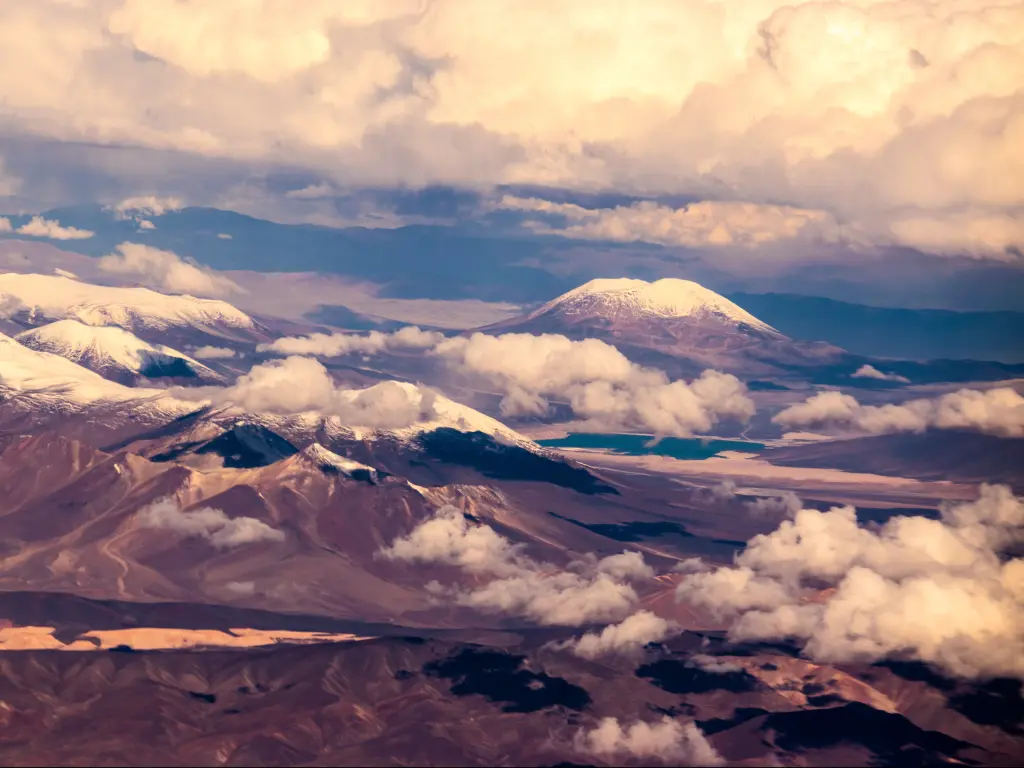
Yep - it's a huge volcano that sits on the border between Chile and Argentina, with the top part covered in snow.
Over the last 20 years, a few people have scaled the volcano in specially modified offroad vehicles with huge tyres, ridiculous suspension and monstrous engines under the bonnet. They got as high as 6,688 m (21,942 ft) above sea level, which is a commendable achievement, but does that make the top of the volcano a road?
No it does not.
If you drive your car into a river, that river doesn't magically get updated on maps as a road either.
The nearest road to the peak of the Ojos del Salado volcano passes at just under 4,600 m (15,090 ft), which is high but not quite high enough.
How do we define what a road is?
Collins and Cambridge dictionaries have almost identical definitions for what a road is, so here is the shorter one from Cambridge:
a long, hard surface built for vehicles to travel along
There are a few critical bits in that definition that I agree with:
- Hard surface - a road has to support a car. Snow, loose earth, and a thick layer of volcano ash don't qualify.
- Built - a road has to actually be constructed. A salt flat is great for driving along really fast, but it's not a road. And neither is a steep side of a mountain, even if it is long and hard as per the first part of the definition.
- For vehicles - Some people might disagree, but I don't take this to mean that as long as "some" vehicle can go along it, the box is ticked. For me, if a road is designed for vehicles, then the majority of what a reasonable person would call a vehicle should be able to go along it. Hence a steep dirt track requiring a 2,000 horsepower monster truck to go up it does not count as a road.
One really important point to add is that a road only qualifies to be on this list if you can actually go and drive on it.
This might sound obvious enough, but the problem with a lot of roads that lay claim to being the highest in the world is that they fail this basic test.
Some of these roads are decommissioned service roads to the top of mountains, which you cannot actually access. Others, including a lot of high passes in India which beat their chest claiming to be the highest, are not open to the public.
You have to have an Indian passport and apply months in advance for a special permit to drive up the road, and even when you do, you'll have to go along with the Indian military.
That sort of thing is not a road that the average guy can simply drive along and so it gets a big thumbs down and is disqualified from our list.
Does a road have to be paved to be on the list?
Good question - a lot of people split the record up and talk about the highest paved roads. I don't mind whether a road is paved or not as long as it looks like a road, works like a road and most normal people would call it a road.
If somebody carves out a perfectly level and driveable road from the side of a mountain and leaves the driving surface as rock, that's a road even though it might not be technically paved.
Most people will begin disagreeing over what the term paved means - does compressed gravel count? What about cobbles or bricks?
Let's keep things simple and for the purpose of this list, we're including all roads as long as they meet our basic requirements.
Why are most of the very high Indian roads not on this list?
Looking at the list, you might rightfully ask - how come all the famous passes in various parts of northern India not on there.
Virtually every other list you might find online has these up there at the top, including Umling La, Mana Pass, and Marsimik La.
The issue with these is that the Indian government restricts access to these roads which means the majority of the world have no way of driving up there. Some (e.g. Marsimik La) only require a Protected Area Permit - something that is usually relatively straight-forward to obtain via an online application.
However, Marsimik La itself is not included in the list of areas the permit allows foreigners to visit, so unless you are an Indian citizen who is also an Indian resident, you legally have no way at all of going up there.
Other passes like Umling La are out of bounds to everybody and are not covered by any permits other than special ones that are dispensed directly by the military. When I say dispensed, these permits are virtually never actually given out, so I wouldn't waste your time trying.
As these roads only exist theoretically and you won't be able to drive them, we took them off our list and into the Honorable Mentions at the bottom.
If you can't actually drive it, it's not a road! It's just a slab of asphalt on a mountain slope.
Now let's get to the actual list of the highest roads in the world!
1. Uturuncu, southern Bolivia - 5,730 m (18,799 ft)
There is a road that leads to the top of the Uturuncu volcano in Bolivia. The volcano actually has two craters and these reach a height of 6,008 m (19,711 ft).
The road goes to the point that sits just below the two craters before rocks and landslides prevent you from going any further. It used to be possible to go all the way to the top and huge trucks would do the drive all day when sulfur was mined from the craters. The bit you can drive to is still pretty high up at a mighty 5,730 m above sea level (18,799 ft), which places it firmly at the top of this list.
While the road gets a little narrow in a couple of spots and there is a steep drop to your left, you should be able to drive up in a car as long as the engine doesn't give up due to a lack of oxygen.
Here's Mario Zechmeister scaling Uturuncu in 2016 on a dirtbike:
2. Semo La, southern Tibet (China) - 5,565 m (18,258 ft)
Semo La may be a few meters short of the winning road, but at 5,565 m above sea level, it is a very high way up. This road is in the Himalayas in southern Tibet.
Unlike the winning entry, is well tarmacked and easily drivable in almost any vehicle as long as the lack of oxygen doesn't stop the car from running.
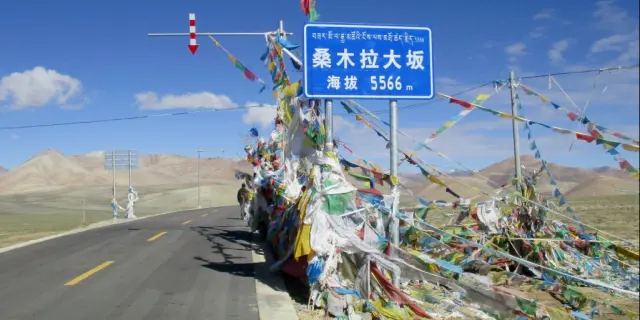
The actual height of the pass is 5,565.1 m as recently corroborated by GPS measurements, but the locals got a bit excited and rounded it up on the sign.
This road doesn't just climb up to the height quickly - it runs for around 150 km (93 miles) along a plateau at a height of over 5,000 m (16,400 ft).
It's a good idea to spend a few days getting ready for high altitudes as you'll have to spend the best part of the day with about 40% of the normal level of oxygen just to drive up and back down.
Also make sure you have petrol, food, and water - you're not exactly going to find shops along the way, and it's the one place you don't want to run out!
3. Kaksang La, India - 5,438 m (17,841 ft)
Although this is far from the highest mountain pass in India, it is the highest that you can access with just the regular Protected Area Pass/ILP. No other permits are required.
The road to the top is surprisingly decent and you should be able to get up there without too many issues in a car or on a bike.
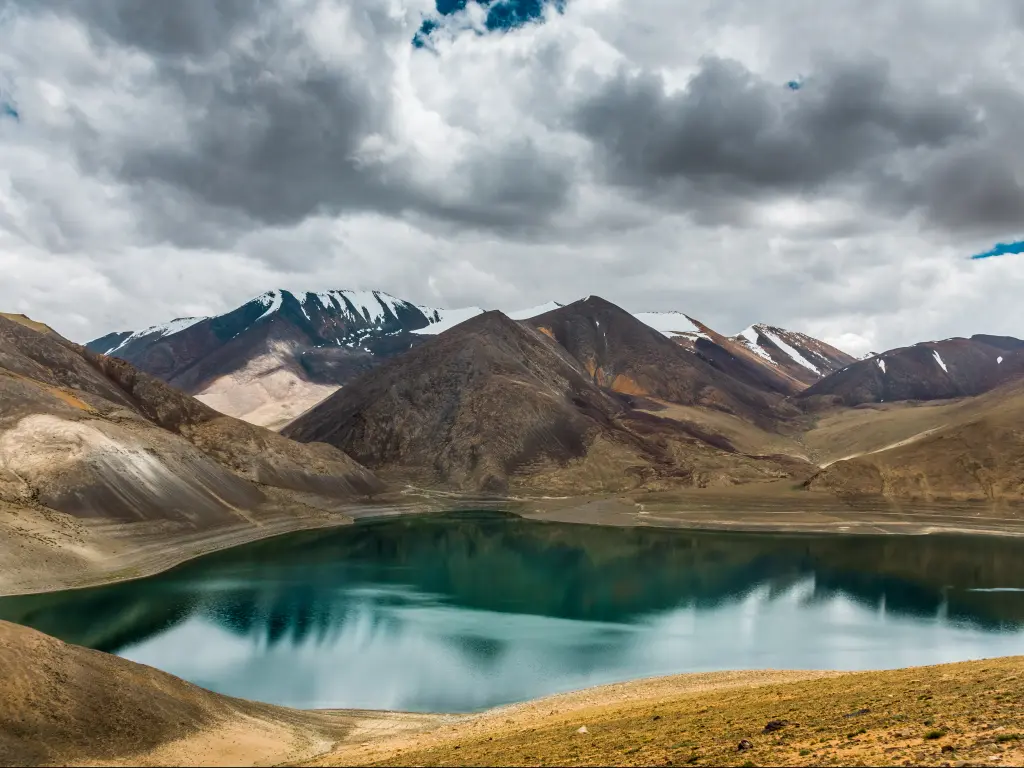
As you reach the top, you'll get beautiful views of the surrounding mountains, and the stunning Mirpal Tso lake is just below the highest point of the road.
4. Suge La, Tibet (China) - 5,430 m (17,815 ft)
Another mountain in Tibet is not far from Lhasa, high up in the Nyenchen Dangla Mountains.
The road to the top is reasonably decent, and you should be able to get up there in an average car with no special passes required or restrictions applied.
The road passes right by the Qiongmo Kangri mountain that reaches a height of 7,048 m (23,123 ft), which makes for some really amazing scenery as you climb the winding road.
If you are in for setting records, the areas next to the Suge La pass are relatively flat and gently sloping bits of mountain - you can drive off to the side and climb to about 5,550 m if you want to get as high as possible, although scaling the 4th highest road in the world is pretty good as it is!
5. Tanglang La, India - 5,328 m (17,480 ft)
Unusually for Kashmir, Tanglang La is open to visitors and does not require special permits to go up.
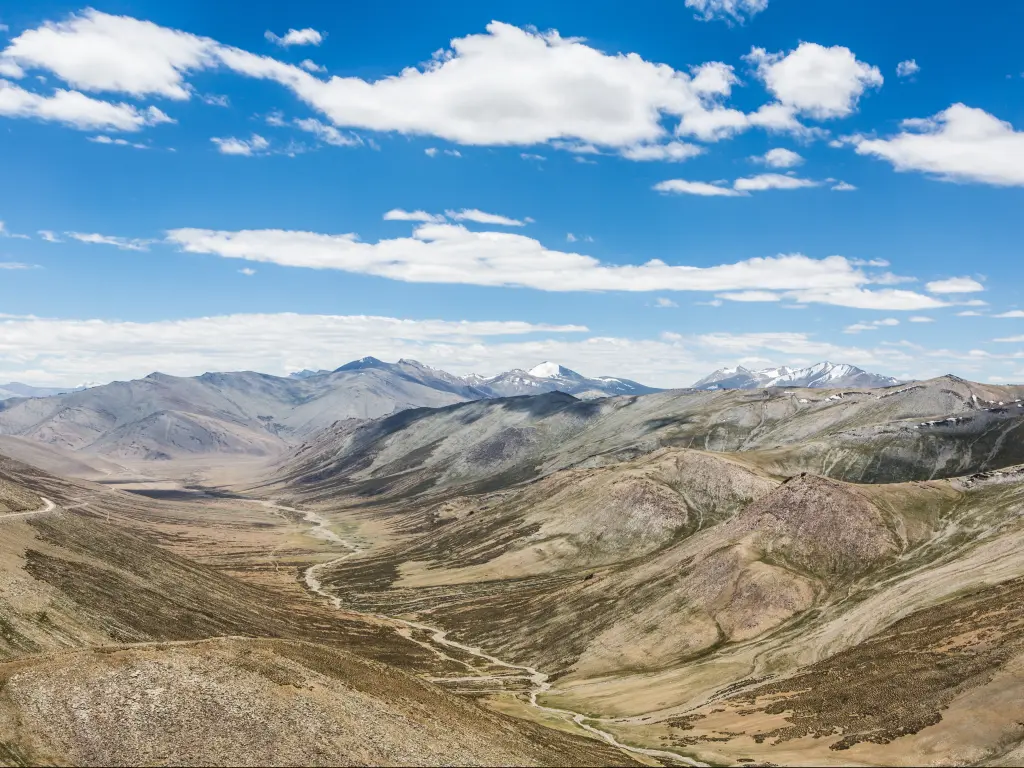
It is located on the main route from Manali to Leh and is fairly busy compared to some of the remote passes that require hours of driving to and sitting right on the border with China.
Although the road snakes up and down the mountain, it is almost entirely paved, is reasonably easy to drive compared to most of the other roads on this list, and is frequented by trucks and buses so you should do just fine in whatever you're driving, oxygen and weather permitting.
Tanglang La often claims to be the second or third highest road in the world, but as you can see, that is not quite true. Even after we excluded everything that is not really a road and roads that are actually open to the public, it does make it onto the list, but only in position 5.
Honorable Mentions and Pretenders
A few contenders didn't make it onto our list, but they came pretty close. Some were failed by their road being impassable by all but the most specialist off-road vehicles. Others are closed to the general public or heavily restricted by the army.
Most of these are included in other lists, although I don't feel that a road you can't actually drive counts for anything!
Ojos del Salado, Argentina - Chile border - 6,688 m (21,942 ft)
This is the answer that you might come across when trying to find out what the highest road in the world is.
Sure - the numbers look insane, and it sounds about right, but here's the thing. It's not a road.
It is quite literally a volcano that some people in very specialist cars managed to drive up a few times over the last few years, but that definitely doesn't qualify it to be a road in our books.
Referring back to our earlier definition, it wasn't built specifically to be a road in any way, and it is not drivable by anything other than the most specially prepared vehicles.
Hence, although it might be the highest point anybody has ever driven, it is not one of the highest roads in the world.
Lajiong La, Tibet - 5,830 m (19,127 ft)
There is little information out there about this remote pass in Tibet and it came very close to topping this list.
The pass is accessible for anyone who is in Tibet, and you don't need any special passes or permits to make your way up - it's not near the border or part of a military installation.
However, the road that leads up to the pass is very extreme. The surface is loose rock, the road is broken up in parts, and the sheer drops in a few places make it a very treacherous journey.
Even drivers with a lot of experience in offroading would think twice before attempting the climb, which is why there is precious little in the way of successful drivers posing for pictures at the summit.
The fact that it is virtually impossible to actually drive up Lajiong La and the road is barely more than scaling an actual mountain meant we had to chalk it off the list as unless you are a real adrenaline nutcase with no regard for your safety, there's no chance you are driving up there any time soon.
Kungzhag La, border between India and China - 5,780 m (18,963 ft)
The Kungzhag La road runs high in the mountains between India and China, and is usually accessible from mid-June to September.
You are even allowed to drive up it without a military convoy or special permits. Unlike many of India's highest roads that are in the Ladakh region that borders Pakistan, Afghanistan, and China, Kungzhag La is a couple of thousand km away in the Sikkim region that sits between the mountain kingdoms of Bhutan and Nepal.
Despite the fact that there's nothing stopping you from driving the road, the surface is little more than natural rocky mountain terrain and gets incredibly steep and inaccessible as you drive along. The official advice is that only highly experienced mountain drivers in specialist vehicles should attempt to drive up.
I have a feeling that driving up in a regular family saloon might end pretty badly, and few people have ever made it up there, so this is another road that makes the honorable mentions list instead of the main lineup.
Mana Pass, India - 5,610 m (18,406 ft)
Mana Pass is another north Indian mountain pass that is located in Uttarakhand, between Nepal and Kashmir.
While the road itself, built by the military to the mountain pass that leads into China, is passable and in good condition, the standard ILP pass does not allow you to drive it.
You will need permits from the local police, the local army, and the district court in order to go up there and even if you have all of those, the army can still restrict access if they choose to do so.
You can drive up to Mana village, dubbed the Last Village in India, with no restrictions, but the village is located at a height of about 3,350 m (10,991 ft) and you will need all your paperwork to go further.
While you can dig up reports of the occasional person who went up the pass, evidence they were allowed up is very limited, with most photos ending with the big sign in Mana village and no proof they made it further. A number of people have reported that the permits are not given out to tourists with very few exceptions.
Umling La, India - between 5,599 m (18,379 ft) and 5,800 m (19,029 ft)
The reports about Umling La are as incoherent and mysterious as the pass itself. There are a lot of different heights being quoted, with the majority agreeing on around 5,800 m above sea level.
While there does appear to be a road connecting two small Indian villages right next to the border with China, the military does not allow anybody to pass through after a brief period of requiring hard to get permits. The Protected Area Pass/ILP no longer allows you access, unlike other local roads.
As you can't drive up the road and there's no way to actually verify whether it is passable in a car or its actual height, Umling La is off the list.
Marsimik La, India - 5,582 m (18,314 ft)
Marsimik La is a pass in northern India that has long laid claim to being the highest road in the world. The sign at the top confirms these claims saying that the pass is located at 5,777 m (18,953 ft), which would make it the highest road in the world... if only it were true.
GPS checks done by several expeditions clock the highest point in the pass as being located at 5,582 m (18,314 ft) instead. In fact, all you have to do to find out is open up google maps and check for yourself by using the Terrain view.
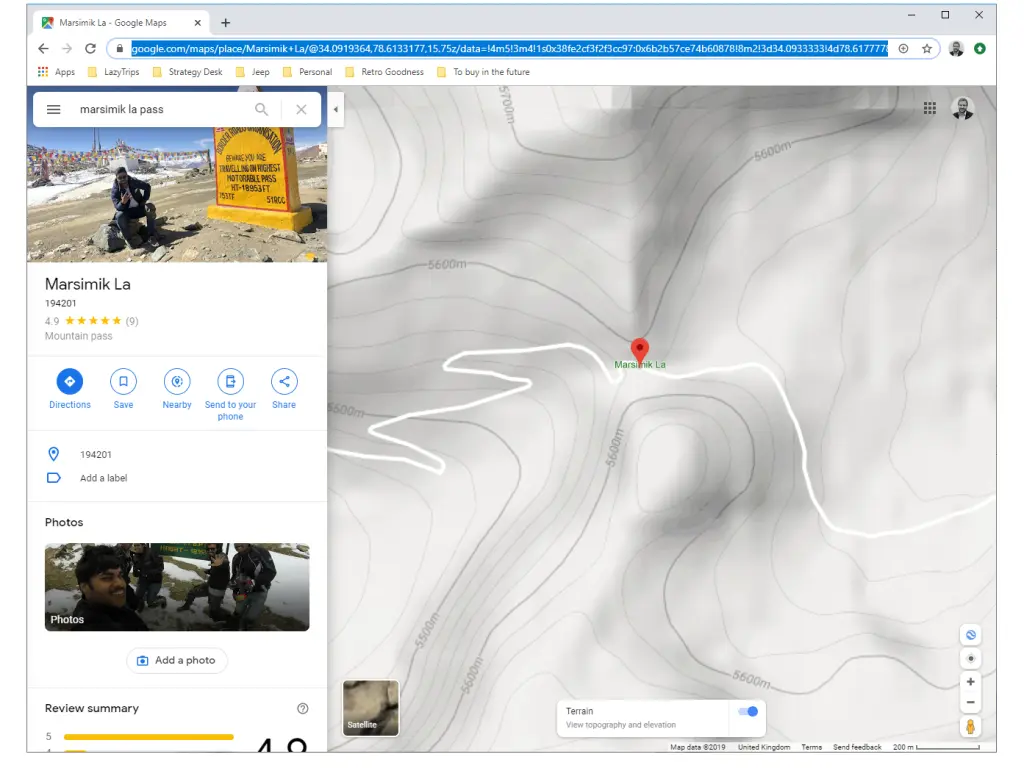
The road up is not perfect, but it is part paved, and although it can be rocky in places, it is generally passable in a reasonable car, surprisingly getting better as you go higher up and hit the plateau at the top.
Unlike other famous northern Indian passes, no special military permit is required. However, the Protected Area Permit for foreigners does not include access to Marsimik La so there is no way for anyone who is not an Indian citizen and resident to drive up there.
Photi La, India - 5,524 m (18,124 ft)
Same story as with Umling La above. Before you get anywhere near the pass, you will see signposts that say that the ILP permit zone ends, and you are not allowed to keep going. If you keep going, you may be arrested and prosecuted by the Indian army.
Occasional army checkpoints relay the same information, and unless you fancy spending some time in a freezing Indian army prison high up in the Himalayas, we would strongly recommend you don't ignore these signs.
Until this situation changes, high mountain passes in India like Photi La are off the official list.
Dongkha La, India - 5,486 m (17,999 ft)
Again, unfortunately, you will need a very special set of permits, including ones issued by the local army chiefs and a local court - don't expect to get these if you are a mere mortal.
This one is particularly unfortunate as the road has recently been tarmacked all the way to the top, and I've heard reports that it's a great drive with amazing views, but as you actually can't drive up there, it has to stay in the Also-Rans section.
Chang La, India - 5,360 m (17,586 ft)
Another one that falls short at the legal paperwork hurdle. The official website for the Indian Protected Area Permits excludes Chang La from the areas you can visit within the overall Kashmir permit, making it a no go for us.
Khardung La, India - 5,359 m (17,582 ft)
Yet another road that famously claims to be the highest in the world is the military pass of Khardung La in northern India.
This is a strategically important road used by the Indian army to supply military outposts high up on the Himalayan glaciers.
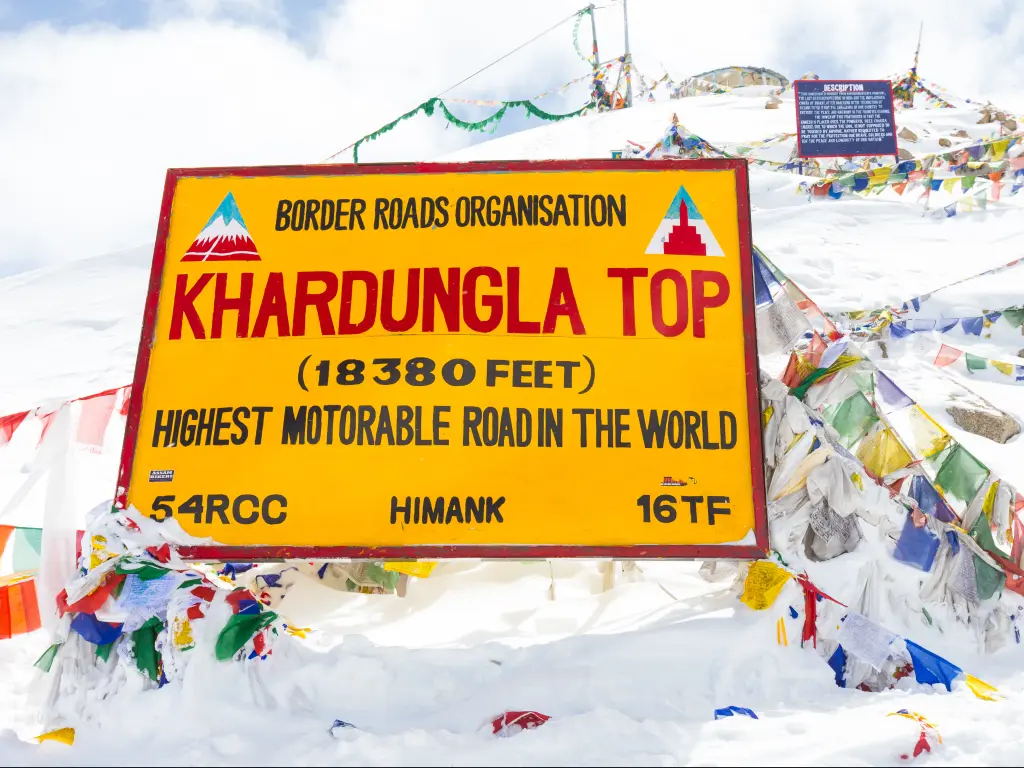
The signs at the top are claiming that this is the highest road in the world, but, unfortunately, the sign exaggerates the height by some 800 feet and even if it was as high as it claims, Uturuncu in Bolivia would still be higher by a whisker, albeit with less signage and fanfare.
Unfortunately, despite lots of misinformation, the Protected Area Pass does not allow access to Khardung La as it is one of the excluded areas in Kashmir. If you are an Indian citizen and resident, you can go up there with an ILP permit, but to the majority of the world, the pass is out of bounds.

